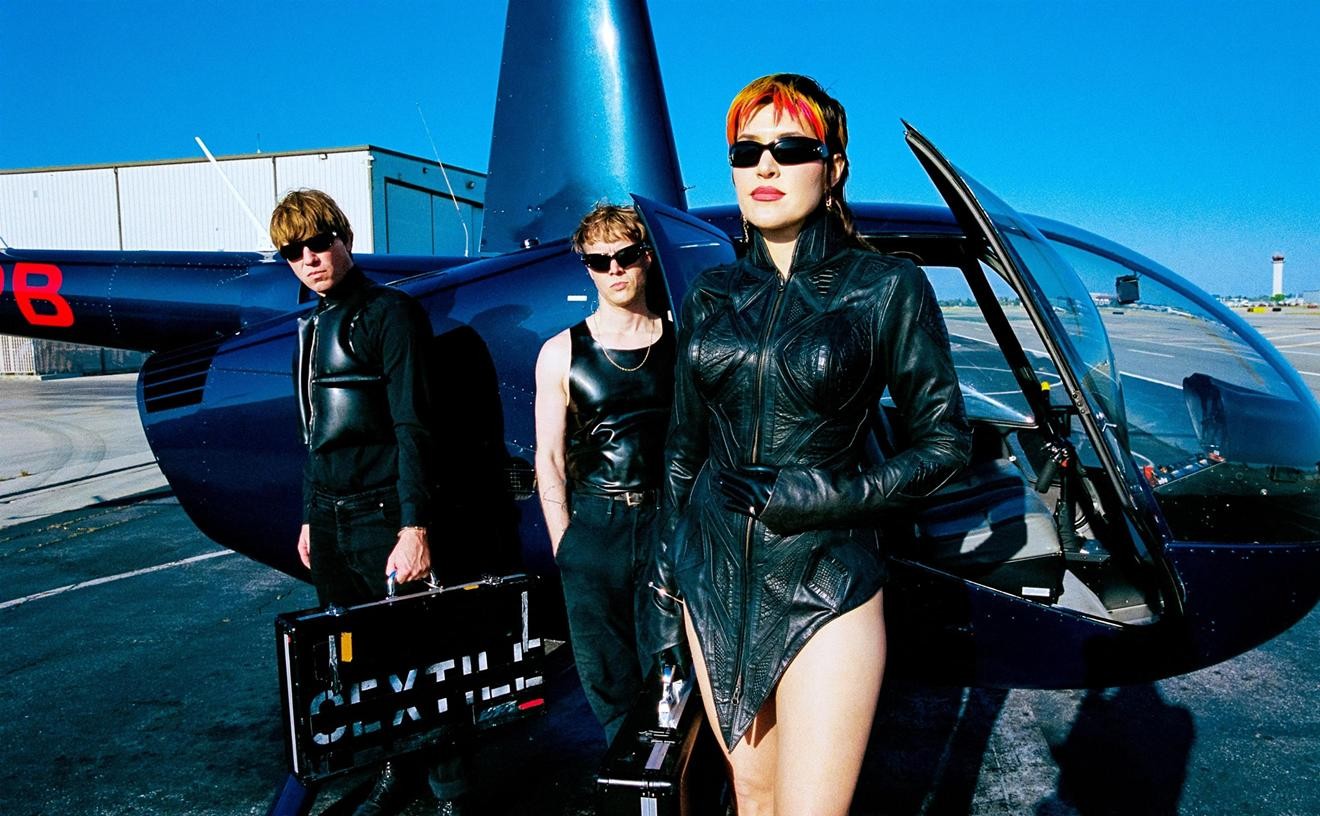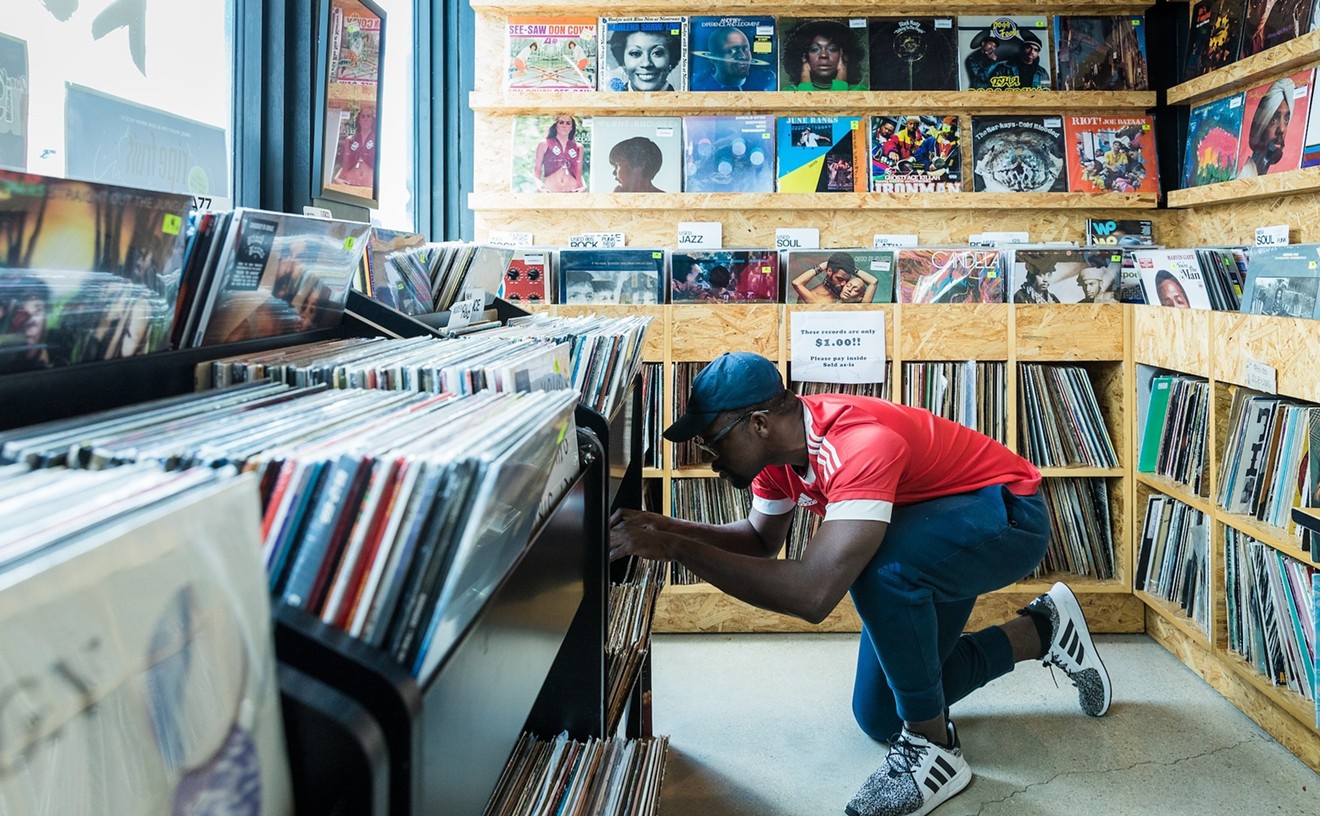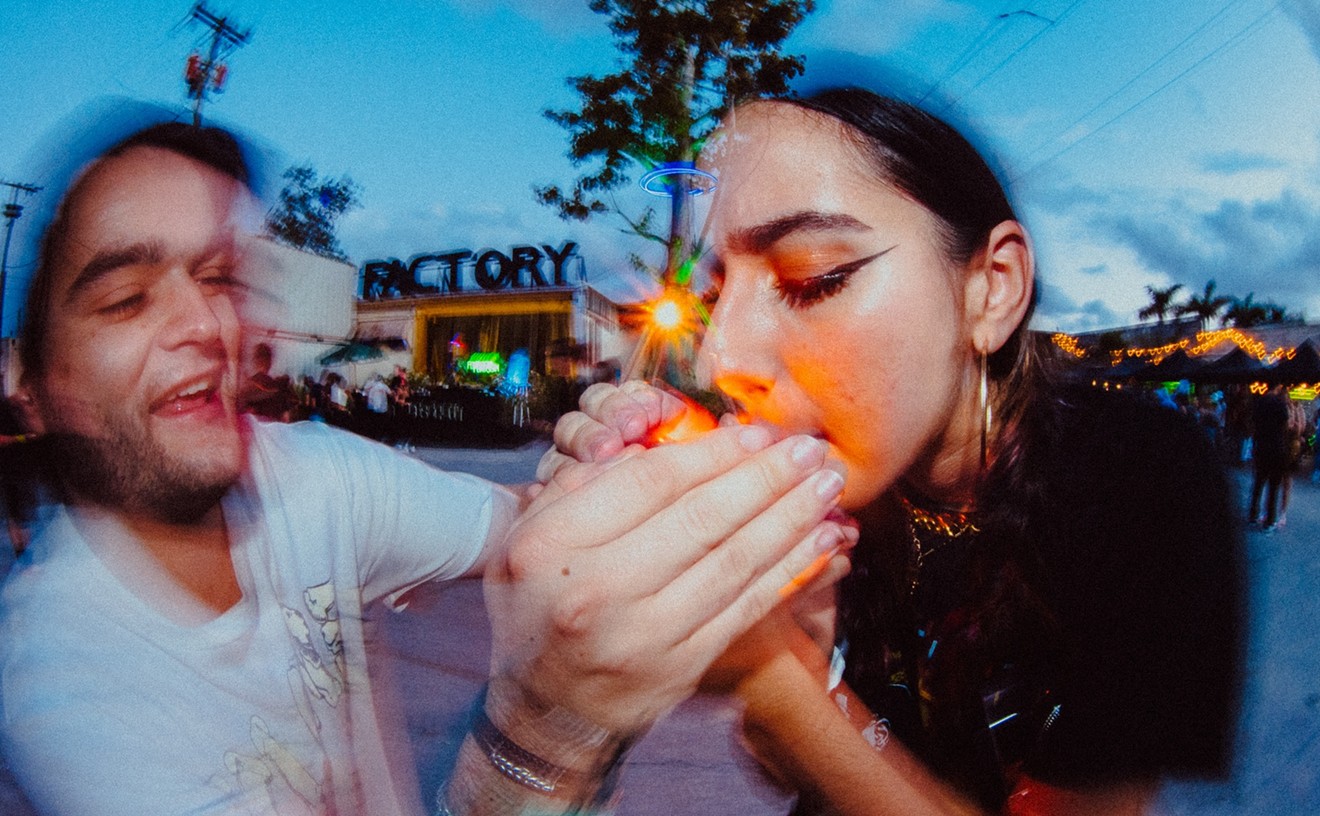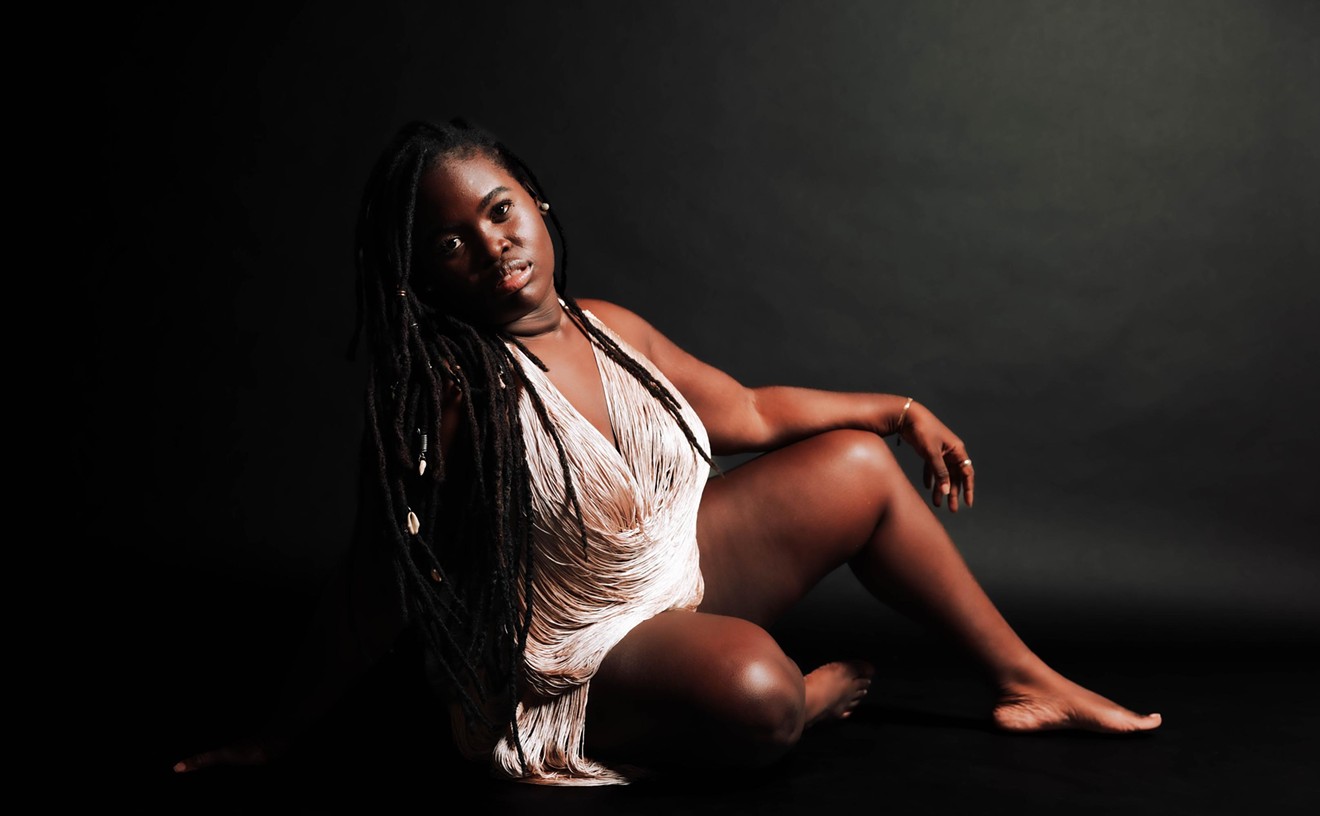"Miami is not a jazz town," Soyka observes, "but unfortunately, the world is not a jazz world. I'm 53 years old and I grew up listening to jazz, whereas when it comes to young people today, jazz is little more than a category of classical music. They aren't exposed to it, so they don't understand it so well. It's like soccer -- why did soccer take so long to get introduced in America when it was so popular internationally for so long? But slowly, over time, young people got exposed to it here, and now it's a big thing. Jazz has just never really been explained to them."
For his part, Soyka is making live jazz of the fairly trad modern-jazz variety available upstairs at the Van Dyke every night of the week in a setting that's pretty close to perfect, from the sound system to the ambiance. It's a small room with a hardwood floor, several small tables situated near the corner where the musicians set up (there's no elevated stage), a bar in the opposite corner, and in back a comfortable sofa and a few big, cushy chairs. The room is dark, with flickering candles on the tables and minimal lighting over the band area. There's an air of elegance to the place that's impressive without being oppressive -- a kind of chic that's inviting rather than exclusive.
Entertainment at the Van Dyke is lined up by Don Wilner, principal bassist and featured soloist with the Palm Beach Pops, assistant principal bassist with the Miami City Ballet, and noted jazz man who has recorded as both bandleader (his debut album will be released this year) and sideman (he's among the musicians on Eddie Higgins's recent disc Portrait in Black and White). Among the players featured regularly at the Van Dyke: reedman Eric Allison, a virtuoso saxophonist, flutist, and clarinetist who records for the Contemporary label; and pianist Higgins, bandleader, recording artist, and a sideman with an impressive list of credits that includes stints with Coleman Hawkins, Lee Morgan, and Wayne Shorter, among many others.
If those names sound familiar, that probably means you've spent some time at MoJazz Cafe, where Allison, Higgins, and a slew of other local hotshots performs regularly. The Miami Beach institution and live-jazz bastion for both fans and musicians was opened in 1993 by Mo Morgen, a saxophonist transplant from New York City who formerly operated the Big Apple loft club Jazzmania Society. MoJazz is the product of Morgen's passion and zeal for the music. He describes it as a place for serious jazz lovers. Actually, he calls it the only place for serious jazz lovers.
Like Soyka, Morgen agrees that Miami isn't a jazz town. "How can it be a jazz town when the one real jazz club in town isn't full every night?" asks Morgen. He doesn't believe his club is in competition with either the Van Dyke Cafe or with O'Hara's Pub in Fort Lauderdale, a long-standing jazz venue, and Morgen makes careful distinctions between his club and the others. "O'Hara's is a place for a certain style of person and age group, a yuppie group," he contends. "It's a pick-up place, a meeting place. You have drinkers there. It's not a jazz crowd."
As for the Van Dyke, Morgen describes it as a "beautiful room," but laments Soyka's failure to keep the Music Room alive: "The fact that he couldn't make it behind the most popular place on South Beach [the News Cafe] attests to how difficult it is to have jazz as the main thing. South Beach is a different animal. People who enjoy South Beach don't want to sit in one room for three hours. I've had people tell me that the crowd is there more for social reasons, that music isn't the main thing. Being the fashionable thing brings you a different type of crowd."
On a recent Thursday night, the MoJazz crowd that gathered for a set by the incredible Cuban percussionist Luis Miranda reflected South Florida's demographic diversity: whites, blacks, and Latins; twentysomethings, fortysomethings, and beyond; couples you could peg for tourists and obvious regulars chatting with the MoJazz staff. From a low stage in a back corner of the club, Miranda and his group Final Touch laid down a scintillating groove built around the veteran conguero's percolating rhythm work, initially to just a smattering of listeners. By 10:00 p.m., as the first set built to a close, with local trumpet ace Ira Sullivan joining the group on a nice reworking of "The Girl from Ipanema," the house began to fill steadily -- a very respectable turnout for a Thursday night.
More than competition from other clubs, Morgen complains about poor media coverage and a South Florida nightclubbing population that doesn't like to fork over dough for cover charges, even when those covers are much less than you'd pay for comparable entertainment in New York City, Chicago, or San Francisco. (To add to Morgen's woes, he also has had to contend with a massive North Beach civic renovation project that isn't expected to reach completion until November.)
"Some people think the cover charge is high here," Morgen says of the club's entrance fee and one-drink minimum (Friday and Saturday covers are six and ten dollars; Wednesday and Thursday three and six dollars; there's no charge on Sunday; and the club is closed Monday and Tuesday). "People from out of town, though, ask how we can do this with such a low cover. But I think we've managed to establish a cover that is respected, and people pay it. Jazz isn't a business with heavy food and liquor sales. Blues clubs survive on a lot of people drinking beer and the social milieu of a blues club -- get down, stomp your feet, and get drunk. The jazz audience is more discriminating and sophisticated about how they spend their money, and they don't want to spend it drinking."
The Van Dyke Cafe features live music seven nights a week, and has only recently started charging for it (five dollars per person on Friday and Saturday if you want a table; bar seating is still free). "Music is costly," Soyka admits. "To bring in the best the local scene has to offer takes money, and the quality is important to me because I love the music. Where the pianist may sound good to the layman, I can hear the difference between a good and bad pianist, so I try to get the best." And he's doing a good job: A recent Wednesday night at the Van Dyke featured several smoking sets by an excellent quartet led by Eric Allison and propelled by Atlanta native James Martin, quite possibly the finest jazz drummer in South Florida.
In their similar and determined pursuits of quality, Soyka and Morgen naturally draw on occasion from the same pool of local talent. Eric Allison -- a South Florida vet who had a successful mid-Seventies stint with the Billy Marcus Quartet -- plays regularly at both cafes and sees clear differences between each. "I think people come to Mo's specifically for the music," Allison notes. "The Van Dyke has what I call the magic Mark Soyka touch -- a great location and quality products at reasonable prices -- but I don't think people go there as much for the music as to hang out. They know it's a comfortable room, and many of them probably come back after they realize there's great music there. But I think it's becoming more of a music room than a trendoid room that happens to have music."
And as that happens, can both clubs survive in an admittedly weak and problematic market? Allison thinks so. "Let me give you an example: In the mid-Seventies, when Billy Marcus and I were at the Traveler's, that scene got rolling and all of these other clubs started opening. Everybody's question then was, 'Don't you think that's going to hurt us?' But what happens is that it creates a momentum. So I don't see them as being in competition, but rather as an enhancement for each other.










